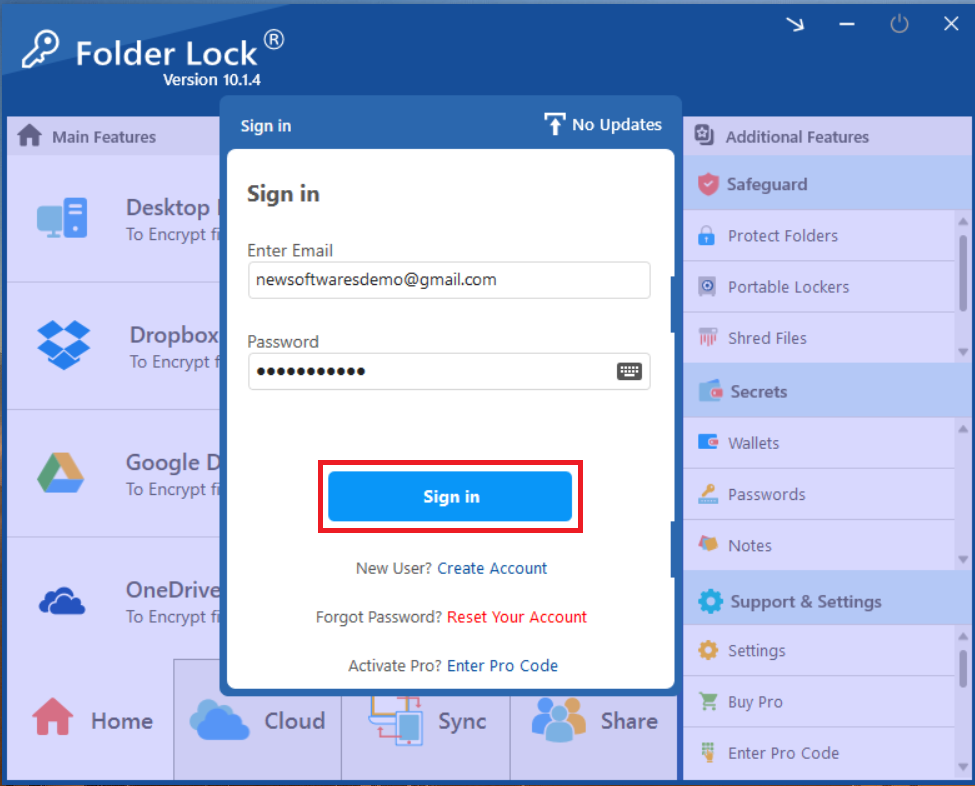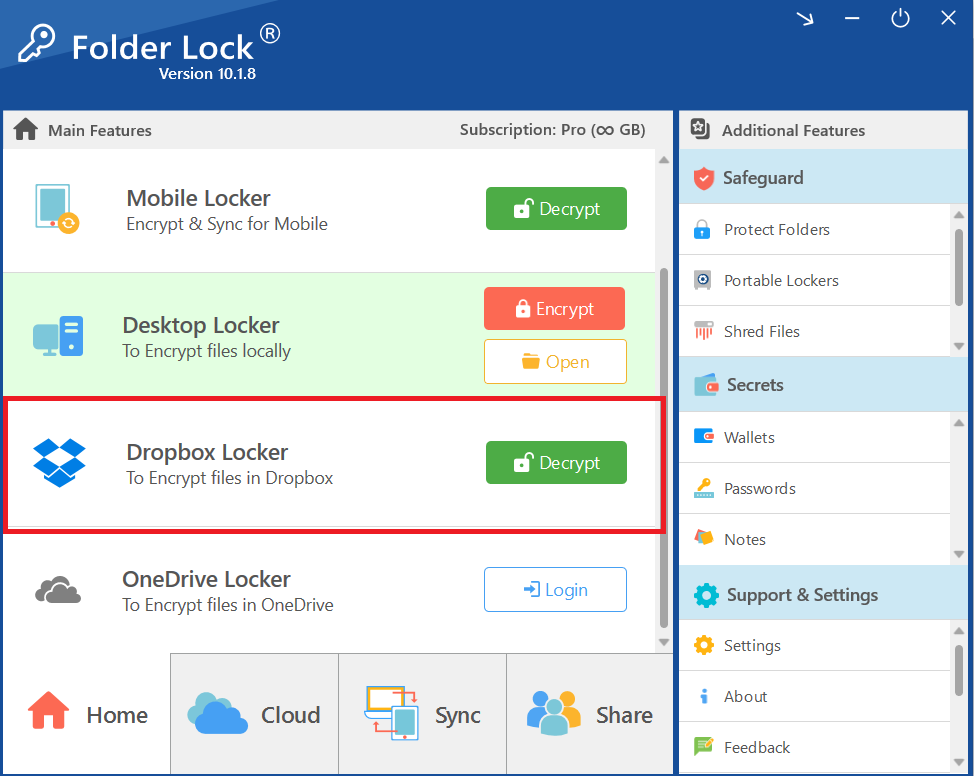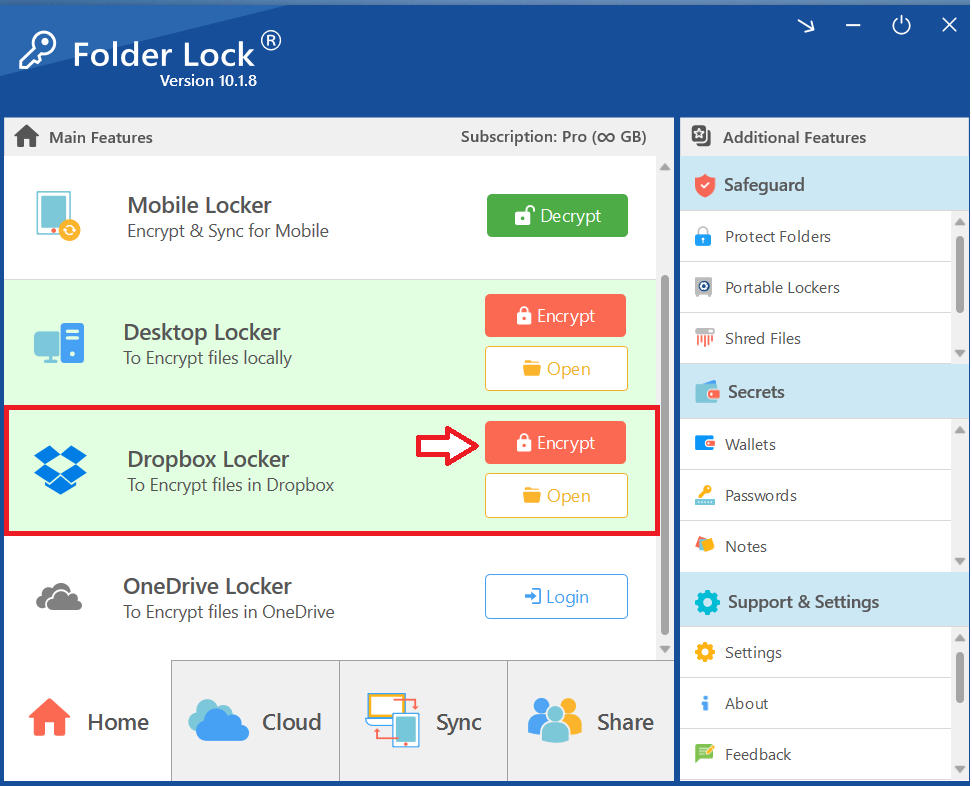
Folder Lock, developed by Newsoftwares.net, provides a powerful and convenient way to secure your cloud-synced files. The Dropbox Locker allows you to encrypt and hide your data with a single click, making it completely inaccessible to unauthorized users even while it is stored in the cloud. This overview will walk you through the simple process of encrypting and decrypting your Dropbox Locker for enhanced privacy.
Part 1: How to Decrypt Your Dropbox Locker
After signing in, By default, your Dropbox Locker is Encrypted. To decrypt your Dropbox locker, follow the below mentioned steps.
Step 1: Open Folder Lock and Sign In
- Launch the Folder Lock application on your computer.

- Sign in with your account credentials.

Step 2: Locate the Dropbox Encrypted Locker
- On the Folder Lock home screen, find the "Dropbox Locker" section.

Step 3: Click "Decrypt" to Unlock the Drive
- Click the green "Decrypt" button to unlock your drive and make your files visiblle.

Step 4: Verify the Locker is Visible
- Check your Windows File Explorer. The Dropbox Locker will now reappear as an accessible drive, and you can open it to access your files.

- Additionally, Decrypt button of dropbox locker is now replaced with "Encrypt" and "Open" button.

Part 2: How to Encrypt Your Dropbox Locker
After Decryption, your Dropbox locker displays two buttons "Encrypt" and "Open". To Encrypt your locker follow the below mentioned steps.
Step 1: Encrypt Your Locker
- On the home screen, find the "Dropbox Locker" section. and click on the "Encrypt" button to lock the drive.

Step 2: Verify the Locker is Hidden
- Once encrypted, the locker will be automatically hidden from Windows File Explorer, and its contents will be inaccessible. Moreover, the Encrypt button is now replaced with Decrypt button.

With the ability to encrypt and decrypt your Dropbox Locker in just a few clicks, you now have complete control over your cloud-synced files. This seamless process ensures that your confidential data remains hidden and inaccessible to others while it’s stored in the cloud. By using these simple yet powerful steps, you gain the peace of mind that your data is not only backed up but also fully protected and always under your command.
